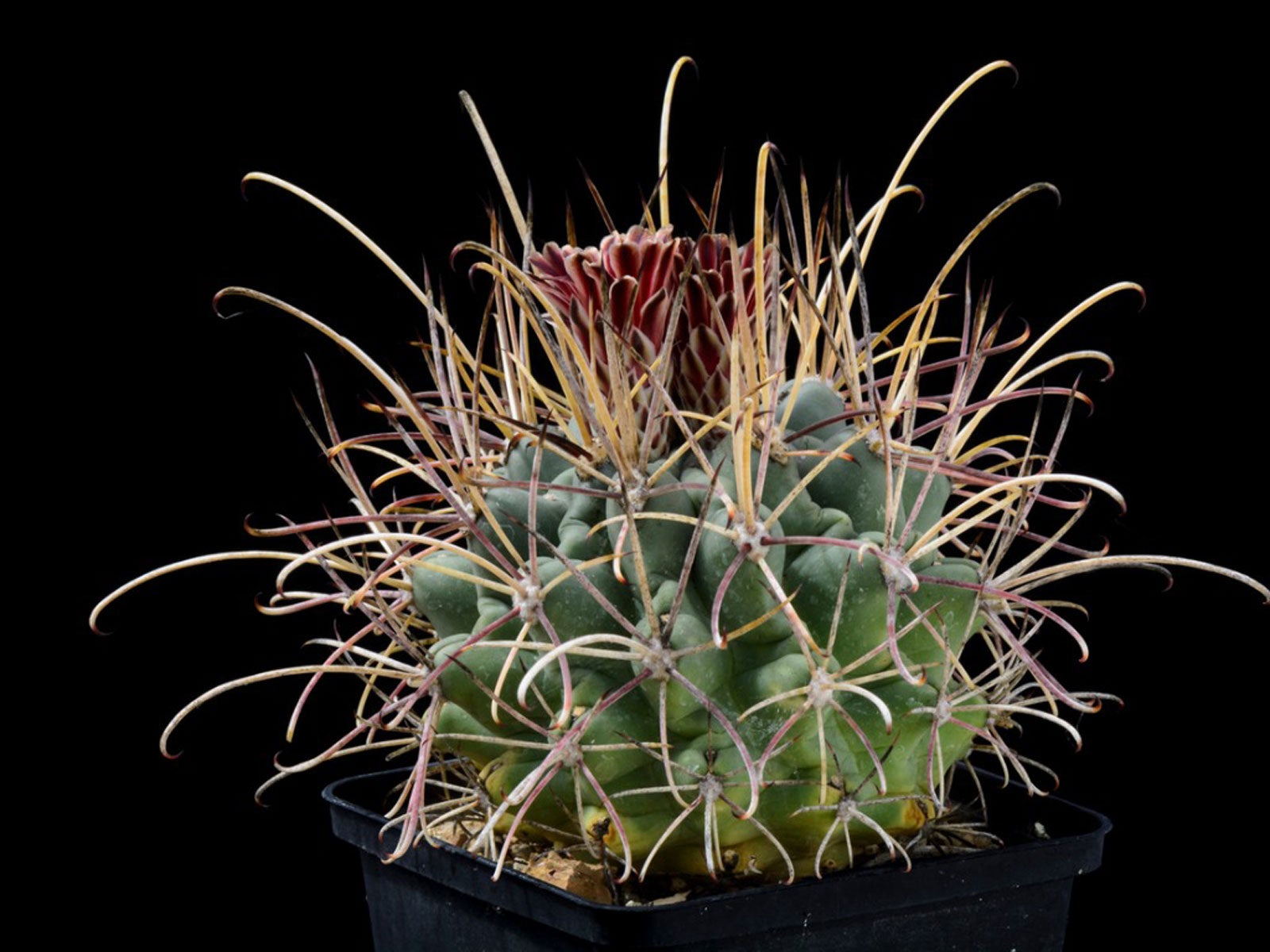Cat Claw Cactus Care – Learn About Growing Cat Claw Cacti


The spectacular cat claw plant (Glandulicactus uncinatus syn. Ancistrocactus uncinatus) is a succulent native to Texas and Mexico. The cactus has numerous other descriptive names, all of which seem to refer to the formidable spines born on the chubby, round body. The most available method for growing cat claw cacti is by seed as the plant is not widely marketed.
Like most cacti, care for cat claw cacti is minimal and highly recommended for beginning gardeners.
About the Cat Claw Plant
A native of the Chihuahua desert, cat claw cactus is closely related to the ferocious looking Ferocactus but the genus is currently Glandulicactus. The cactus has been miss-classed numerous times, finally ending up with a name that stems from the Greek for 'fishhook.' Among the colorful names for this diminutive cactus are fishhook cactus, brown flowered hedgehog, Turk's head cactus, and Texas hedgehog.
When mature the plant is only about 6 inches (15 cm.) tall and may be round or slightly elongated. It has no stems but is covered in the long, red hooked main spines and peripheral spines of beige that are much shorter. The skin of the plant is bluish green and bumpy with large tubercles. In spring, mature cacti produce funnel-shaped flowers in a rusty red to maroon. Each 3 inch bloom (8 cm.) develops into a thick, red fruit.
Tips on Growing Cat Claw Cacti
As mentioned, cat claw cactus care is quite simple. All the plant really needs is plenty of sunshine and gravelly, nutrient-poor soil. Sandy soil that is well-draining is also a good medium.
The minimum temperature is 25 degrees F. (-4 C.) but any lower and the little plant will be killed. If container grown, use a fairly deep pot to accommodate the extensive root system. In the wild, cat claw cacti will grow in crevasses of rock where there is little nourishment, and the area is arid.
Cat Claw Cactus Care
Since there are no branches or leaves, pruning is not necessary. Container plants should receive a diluted cactus food in spring.
Sign up for the Gardening Know How newsletter today and receive a free copy of our e-book "How to Grow Delicious Tomatoes".
Keep the plant just moist to the touch. Allow it to dry between watering and do not place containers in a saucer where water can collect and rot the roots. Reduce watering by half in the dormant season.
This is a slow growing plant, so patience is necessary if you wish to see flowers and fruit. Grow cat claw cactus in a container outside in spring and summer and bring it indoors for the winter.

Bonnie Grant is a professional landscaper with a Certification in Urban Gardening. She has been gardening and writing for 15 years. A former professional chef, she has a passion for edible landscaping.